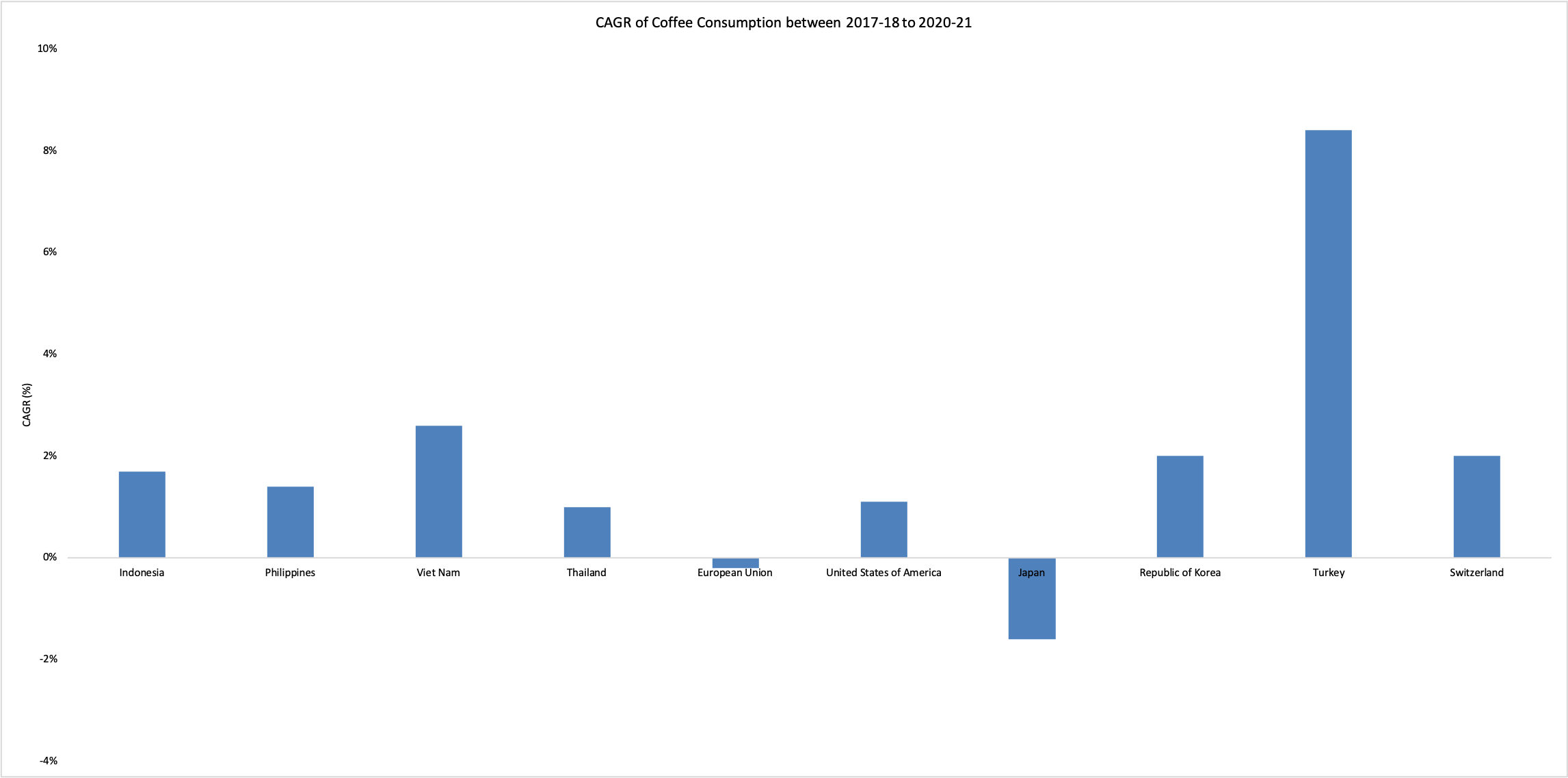Asia’s love for coffee opens door to new opportunities

Coffee - is the second most traded commodity in the world right after petroleum. The high trade volume is driven by the effect of globalization and the growing demand for caffeine. Coffee production is dominated by a few South American and Asian countries that have an abundance of labor; however, coffee is processed, marketed, and consumed largely by the North American and European countries. Vietnam and Indonesia are the two largest coffee-producing countries of Asia and they export a large share of their production to large coffee-consuming countries like the United States (U.S.), Finland, Germany, and Switzerland. In the last few years, coffee has become an integral part of Asia's food & beverage culture and the demand for coffee is growing rapidly in this region.
Currently, Asia produces 29% of the world's coffee beans, (including Oceania) but consumes only 22% of them. According to the International Coffee Organization (ICO), in the past five years, Asia's coffee consumption has grown by 1.5%, compared to 0.5% growth in Europe and 1.2% in the U.S. Looking at the consumption patterns more granularly, Asian countries like Vietnam (2.6%), South Korea (2%) Indonesia (1.7%), and the Philippines (1.4%) have recorded a compound annual growth rate (CAGR) of coffee consumption between 2017-18 and 2020-21 more than that of the longer-standing coffee consuming countries. With such a high CAGR, these Asian will soon become an even larger thriving market for the coffee industry.

Source: ICO.
Asia has always been a tea-drinking region but with growing income and exposure to western coffee drinking practices, the demand for coffee has skyrocketed in the region. The fact that Asia is home to leading coffee-producing countries makes cross-border trade much faster and easier. Countries like Vietnam, Indonesia, and Thailand have established every step of the coffee supply chain, from production, processing, marketing to consumption. Asian coffee drinkers have also developed a taste for locally produced and processed coffee. Previously, high-quality arabica and high-grade coffee were not consumed domestically in these regions as the majority of the beans were exported. Since the demand for coffee has started soaring, even export quality high-grade beans are being processed within these countries and marketed as a great choice for a good cup of coffee.

The future of coffee in the Asian region seems to be very bright as the demand for coffee by the working population continues to rise. There has been a visible growth in the presence of large multinational coffee chains and an increase in the e-commerce retail sector. Doors are opening up for all coffee brands to establish and grow their business in the region and make the best out of the lucrative business. In the last few years, many small specialist coffee outlets have been established in Tokyo, Jakarta, Hong Kong, Singapore, and urban China alongside those of the bigger regional and international branded groups. This is the perfect opportunity for new or niche brands to build their presence in markets urban hubs of Asia to capture a profitable share of the market before the market becomes saturated.
Sources
- Nikkei Asia. “Asia's coffee revolution: From Indonesia to Vietnam, homegrown beans are back.”
- International Coffee Organization . Consumption Table.
- USDA. Coffee: World Markets and Trade.





